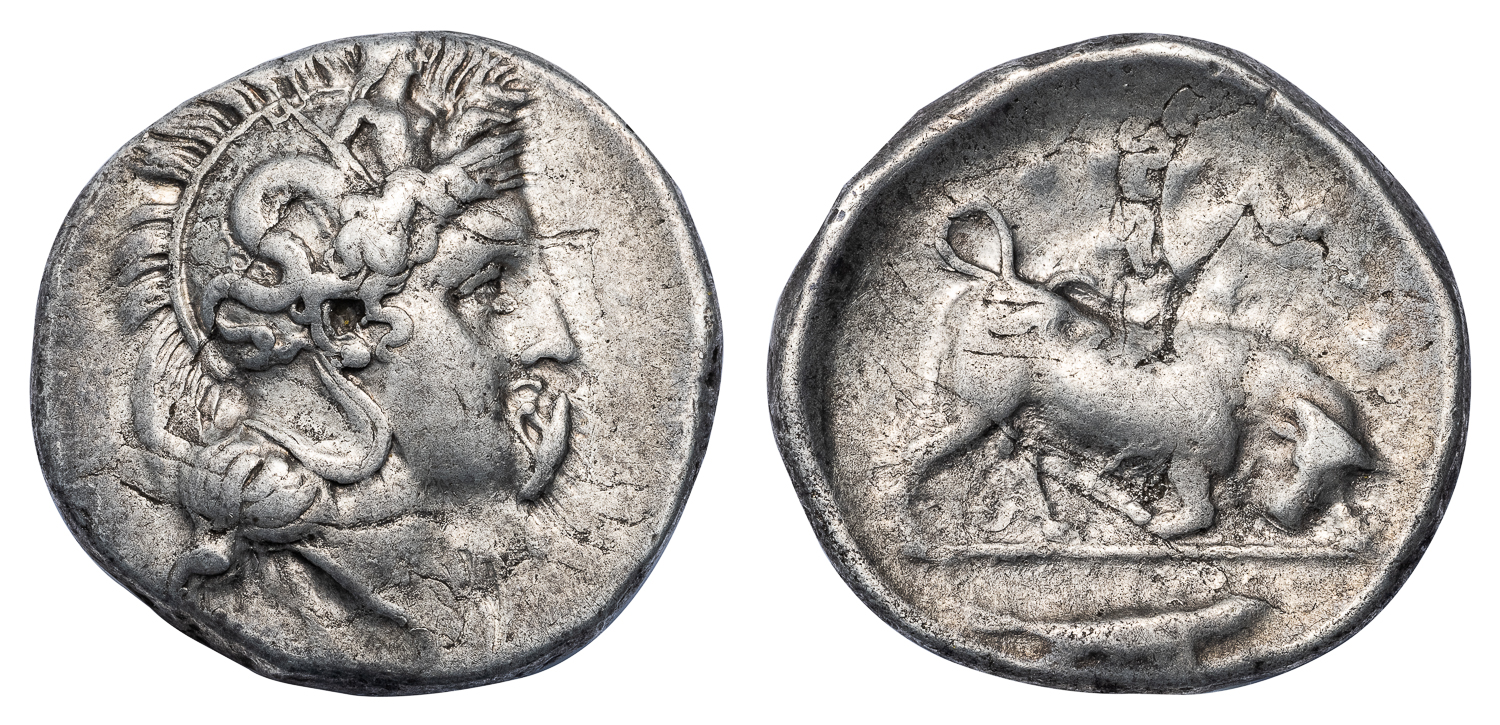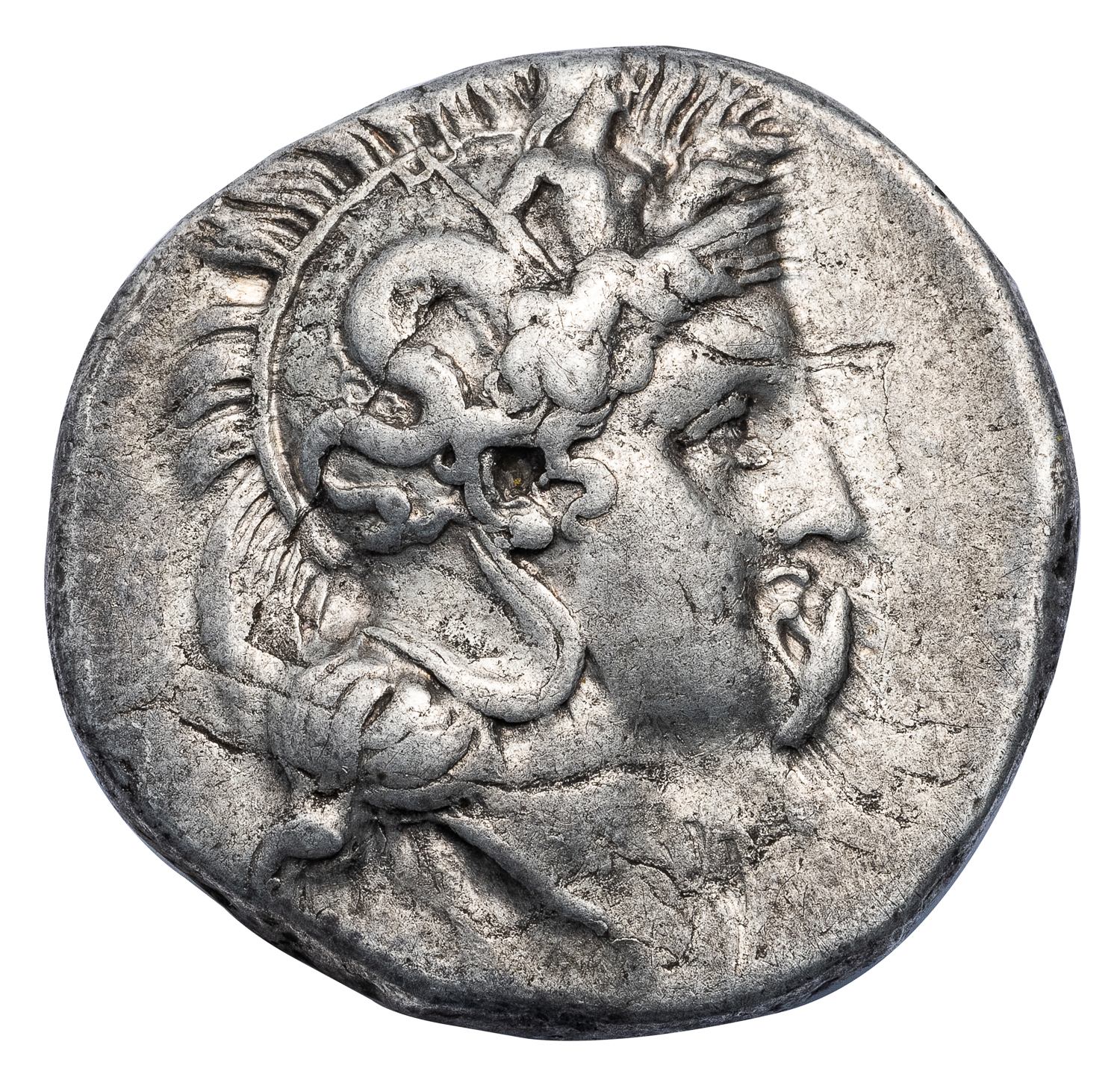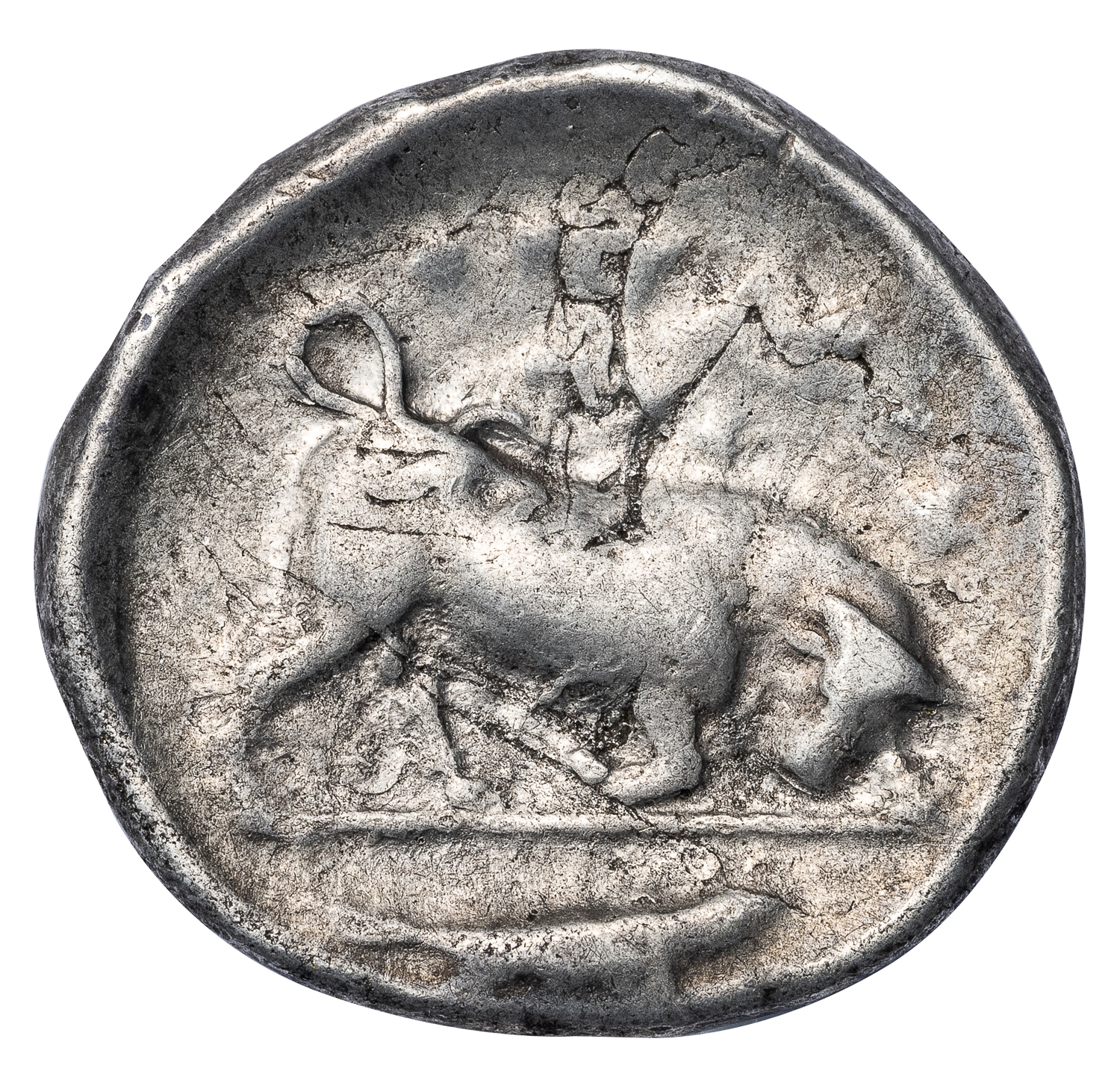THURIIUM SILVER NOMOS – EXCEPTIONALLY INTERESTING OVERSTRIKE ON A CORINTHIAN STATER – VF GREEK LUCANIA COIN (Inv. 18710)
Sold
FPL VI, 5 (18710). LUCANIA. THURIUM. Circa 400-350 BC.
Silver nomos, 7.77 g, 22 mm. Overstruck on Corinthian-type stater. Traces of undertype (helmet neck guard and curls of Athena’s hair) above bull on reverse.
Obv. Helmeted head of Athena right, Scylla ornament on helmet [large die break before lips and chin]. Rev. [ΘOYPIΩN], bull butting right, [NY or NYΣ above], fish swimming right in exergue.
HN Italy 1790; SNG ANS 1054; HGC 1, 1260; D. MacDonald, Overstruck Greek Coins (Atlanta, 2009), 24-25 (same obverse die and host).
VF.
The obverse die used for the present piece is heavily worn and exhibits a prominent die break, indicating that it was drawing close to the end of its useful life. It is known to have overstruck at least two other Corinthian-type staters catalogued by MacDonald. He also reports examining three other specimens of Corinthian-type staters overstruck by the same obverse die in this very late state. It is possible that the present piece is one of the additional specimens mentioned by MacDonald.
Thurian nomoi of the magistrate NY or NYΣ are conventionally dated to the period ca. 400-350 BC, but the overstriking of these on Corinthian-type staters suggest that the series continued a little later, into the 340s BC. The cut-down Corinthian coins used as hosts for the Thurian issue may have come to southern Italy along with 2,000 Corinthian hoplites and 200 horsemen dispatched in 344 BC to support the Corinthian general Timoleon in a developing war against the Carthaginians in Sicily. These fresh troops were initially blockaded at Thurium by the Carthaginian fleet, before they could make a march to Rhegium and cross into Sicily (Plutarch, Timoleon, 16 and 19).



